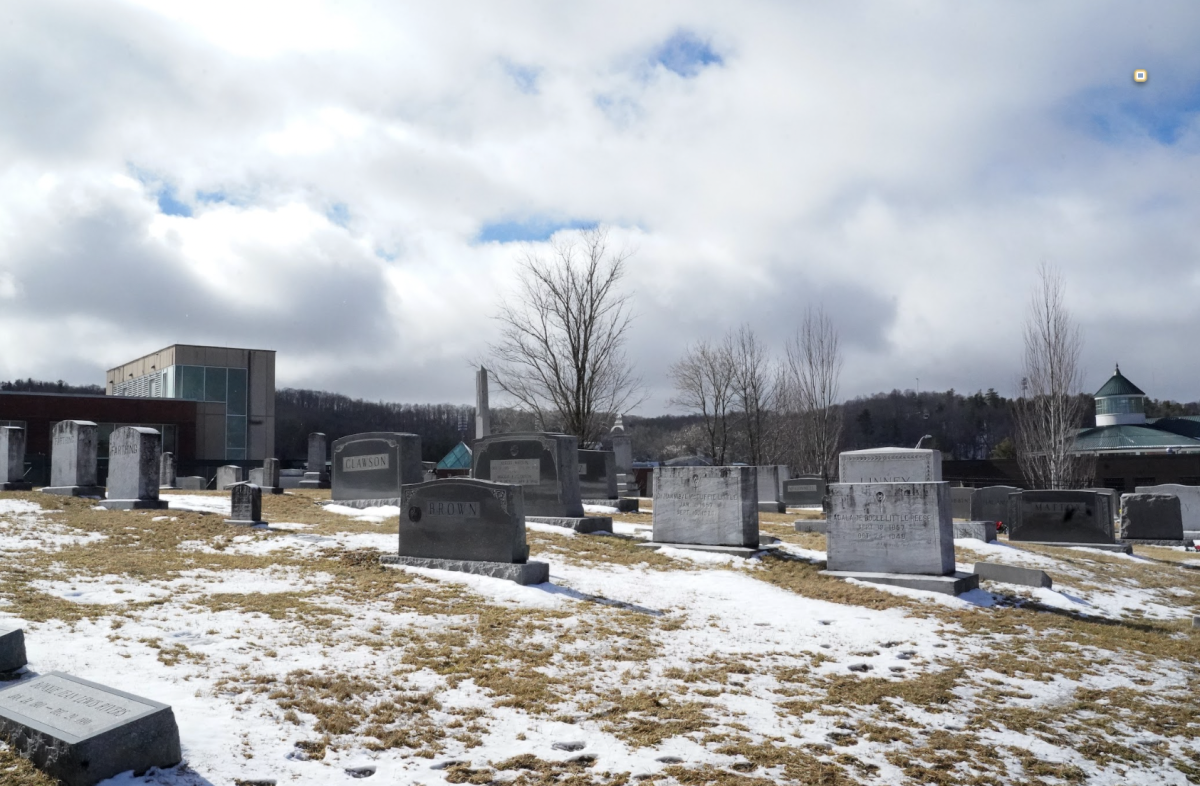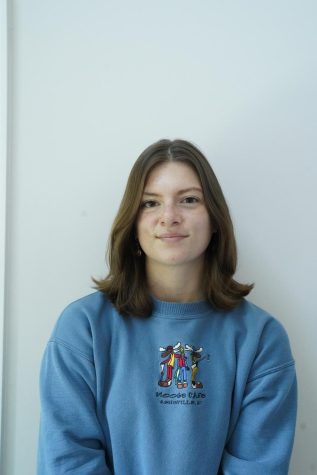The Boone Town Council approved historic interpretative panels during their meeting Dec. 4 for installation throughout the Boone Cemetery.
Two textual panels and one sign, drafted by the Historic Preservation Commission, will be installed to inform visitors of the cemetery’s rules and notable history.
Located on Howard Street and behind Summit Hall, the cemetery’s earliest burials date to the 1850s, before the town was incorporated. Integral figures of Boone’s history lie in the cemetery, including B.B. and D.D. Dougherty, App State’s founders, and John Preston Arthur, author of the 1915 book “A History of Watauga County, North Carolina.”
Throughout its use, Boone Cemetery was segregated, with white burials reserved for the west section and Black burials reserved for the east section.
According to Watauga Democrat archives from 1918-48, locals referred to the white section as the “Boone” and “City” cemetery, while the Black section was called the “Colored” and “Negro” cemetery.
Burials in the white section were often accompanied by named markers, while most in the Black section went unmarked until 2022. At some points, a fence encompassed only the white section.
In 1957, incumbent Boone mayoral candidate Gordon Winkler and three city council candidates ran a campaign ad in the Watauga Democrat, promising constituents that, if reelected, the town would install a “modern fence around our city cemetery” and assume maintenance responsibilities.
After his reelection, the town constructed the chain-link fence around only the white section and began caring for the cemetery, which remained privately owned.
The fence stood until 2016 when the Town of Boone removed it after purchasing both sections of the cemetery.
In 1865, three Union soldiers died in Boone from disease and were buried side-by-side in the Black section, their graves among the few marked by named stones in the east side.
The panels’ text contains the general history of the cemetery and interprets its racial segregation and Union soldier burials.
“These are the themes that were selected by town council and that we were told to develop interpretation around,” said Eric Plaag, town council member and former chair of the HPC, during a lecture on the Boone Cemetery Jan. 25.
The panels project began in February 2021, when the town manager at the time, John Ward, requested the HPC consider placing educational panels to help reduce incidents of skiing and sledding inside the cemetery.
In April 2021, the town council approved the HPC’s proposal to begin work on the panels. The project was delayed until September 2022, when members resumed discussion and research.
During their meeting on July 10, the HPC approved initial drafts of four interpretative panels, authored by Plaag, and sent them to be approved by the town council Aug. 9.
After substantial community feedback and suggestions, the project was delayed for months to consider the public requests for changes.
The original Panel #2, which listed rules for visitors, was changed to a sign. Panel #4, which interpreted the burials of Union soldiers in the Black section, was removed and a sentence mentioning the Union soldiers was added to the final draft of Panel #2.
The HPC originally planned to place QR codes on each panel that would link to a list of the prominent historical figures buried in the cemetery and more of the HPC’s research. Instead, pamphlets and brochures with similar content will accompany each panel.
On Nov. 14, the HPC approved final drafts for two panels and a rules sign.
Panel #1, titled “Boone Cemetery,” describes the basic history of the cemetery during its use and will be placed at the entrance of the cemetery. Panel #2, “A Divided Cemetery,” interprets the cemetery’s racial segregation and will be placed at the dividing line between the white and Black sections where the chain-link fence used to stand.
The HPC is currently designing and ordering the panels, said Town of Boone Advanced Planning Specialist Jessica Mitchell.
Installation is expected to cost $3,500. Plaag, who left the commission in December to begin his tenure as a town council member, said he expects the panels to be installed during the summer.
The interpretative panels project adds to the efforts by the Town of Boone in the last decade to provide for the cemetery’s long-term preservation.
In 2015, the town purchased both sections of the cemetery after requests from community members to renovate and preserve the Black section, which was overgrown and poorly maintained.
In 2016, the town spent over $100,000 in preservation efforts, including clearing trees and brush that littered both sides of the cemetery, removal of the chain-link fence erected in the 1950s and using ground penetrating radar to survey the Black section, which discovered 165 unmarked graves.
The Junaluska Heritage Association, in partnership with the Department of Anthropology, used courthouse records to discover some of the unknown burials. In 2017, the JHA unveiled a monument with the names of 78 known Black burials in the east section.
During the 2021 spring semester, Associate Professors of Anthropology Alice Wright and Cameron Gokee launched the Junaluska Community Archaeology Project, in which students researched and preserved the Junaluska community’s history.
In November 2022, project members and other volunteers in collaboration with the JHA installed flat stones above each unmarked grave throughout the Black section.
The leftover stones were repurposed in May 2023, when Wright, Gokee and the JHA led another group of volunteers and placed a line of stones between the Black and white sections, exactly where the chain-link fence used to separate them.



